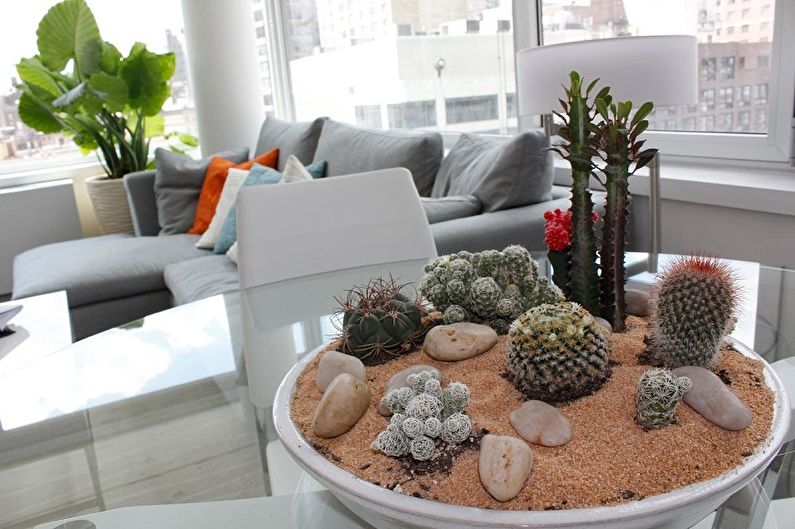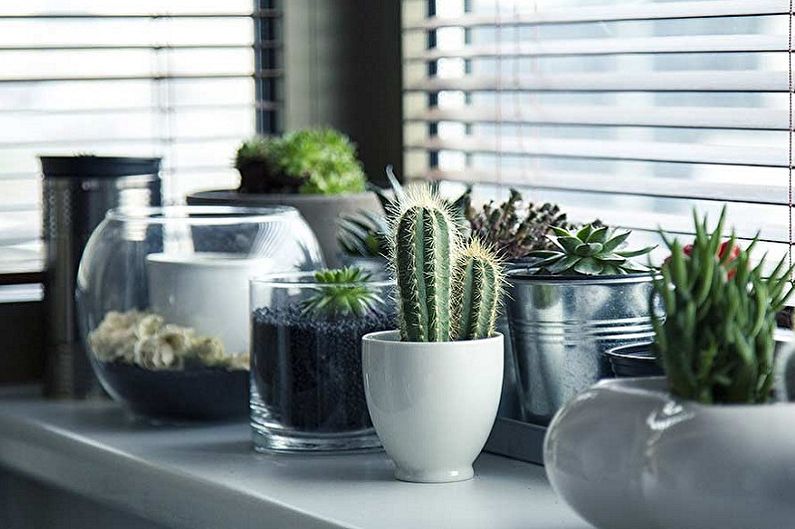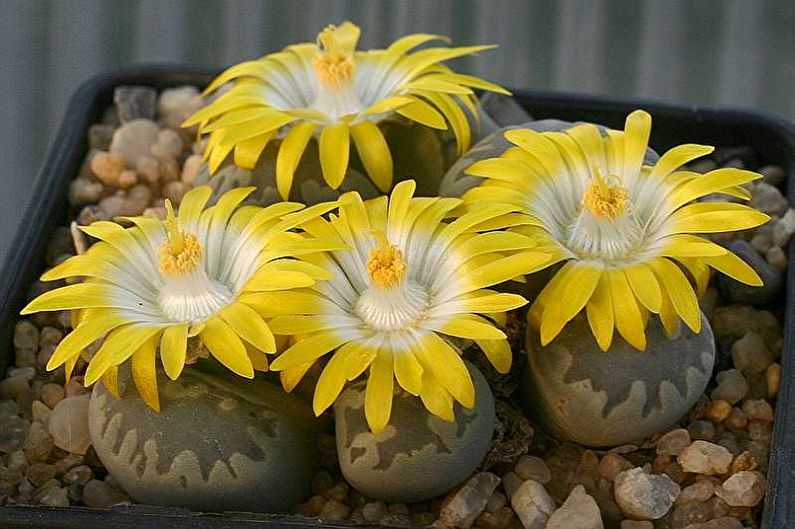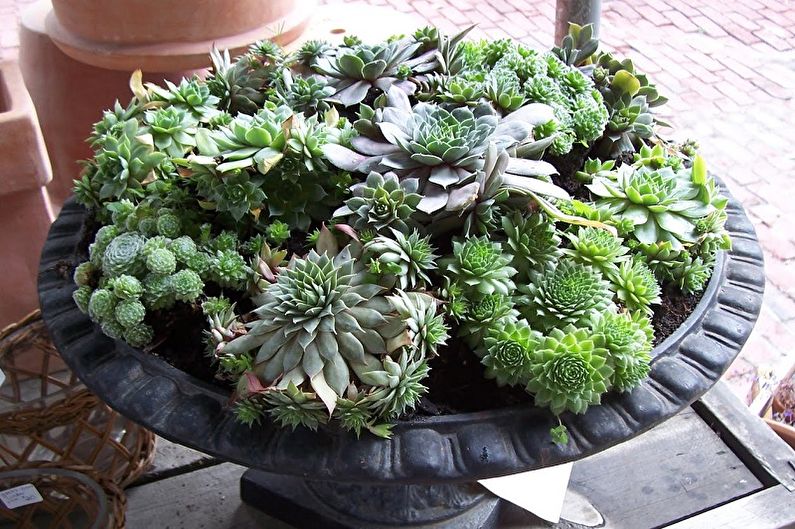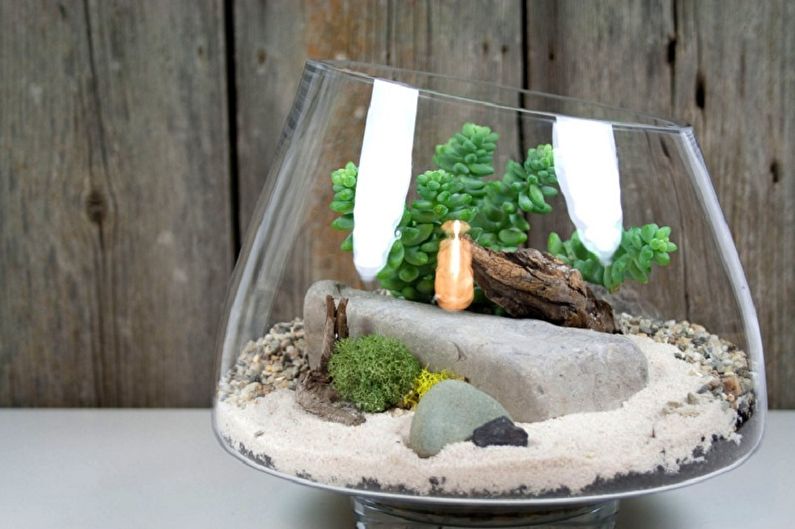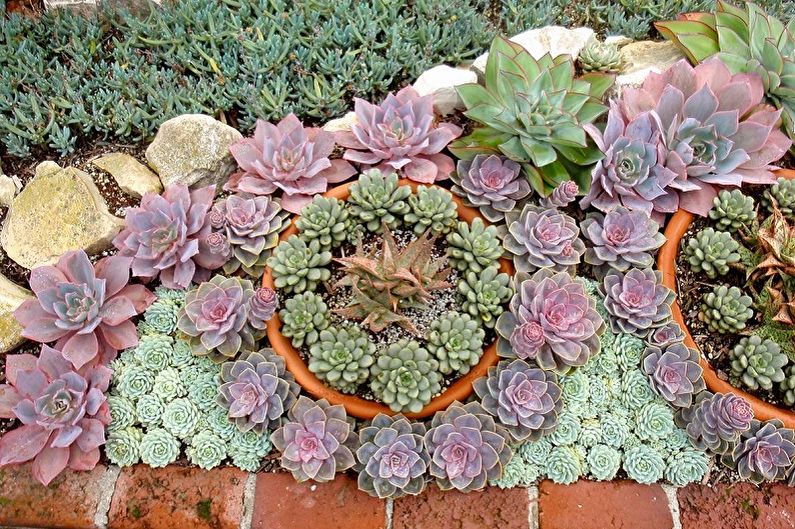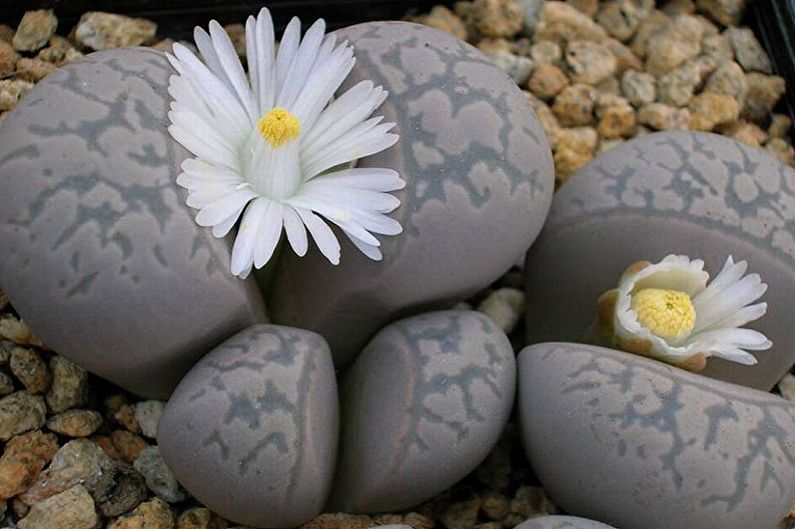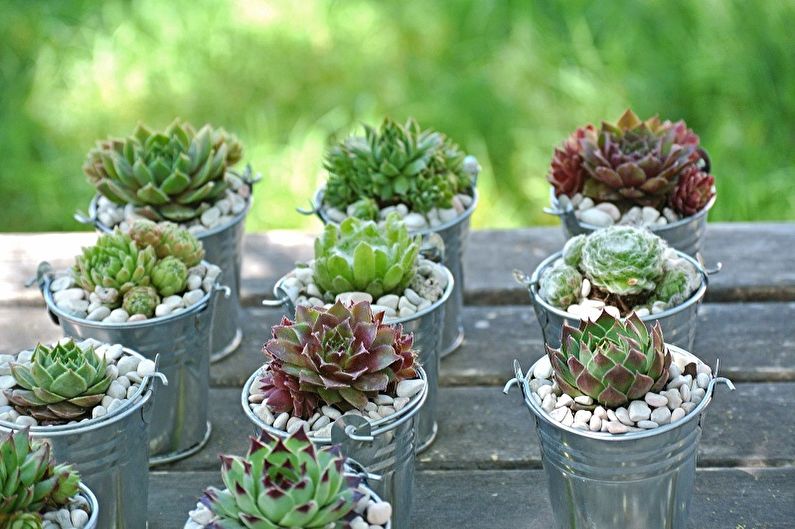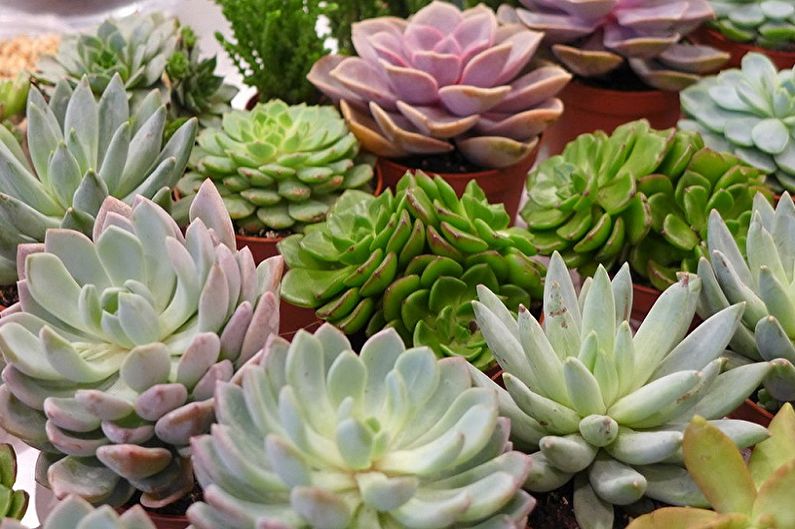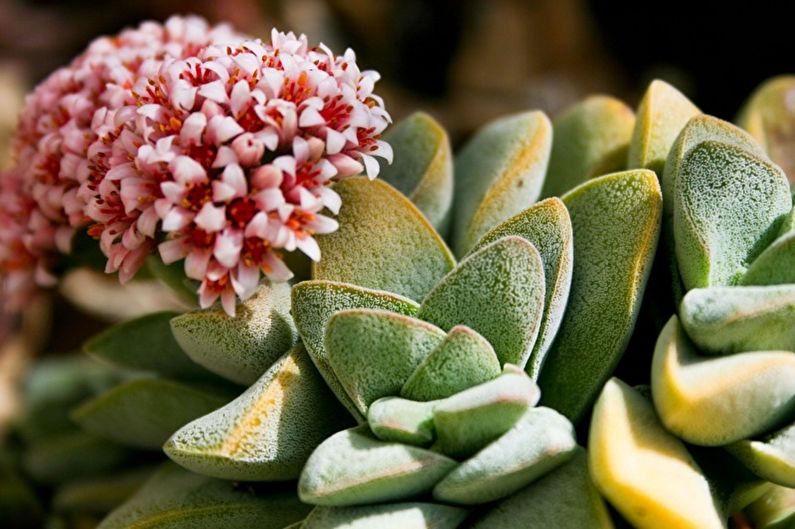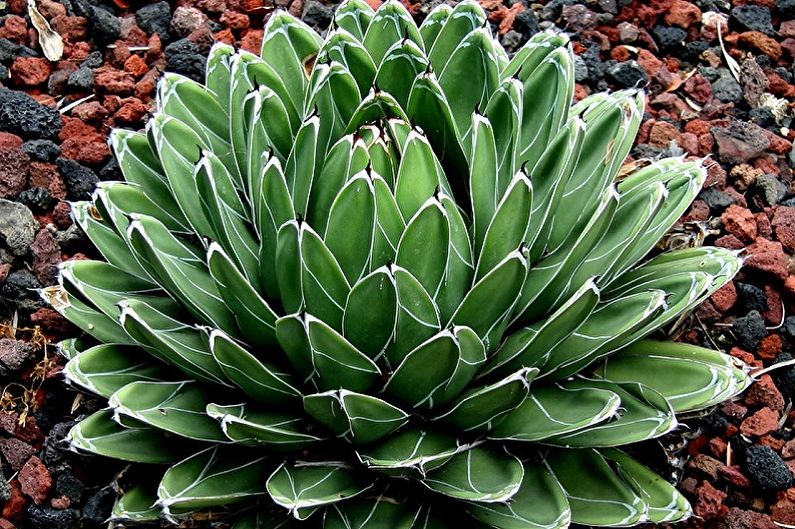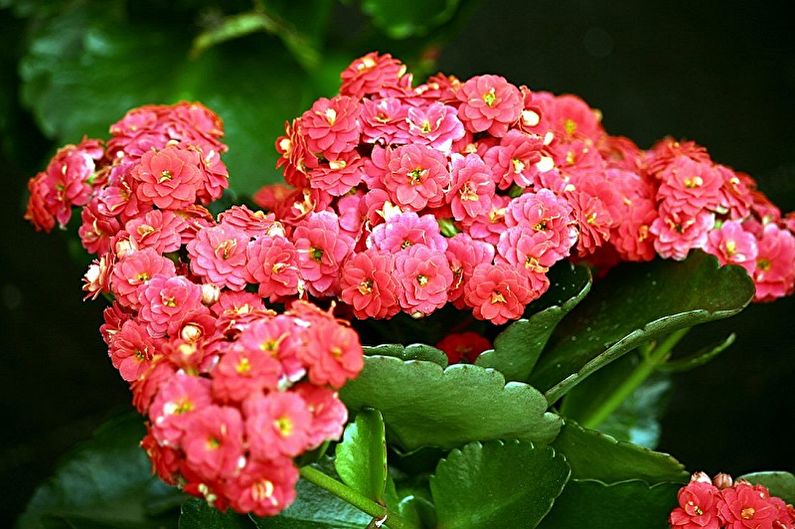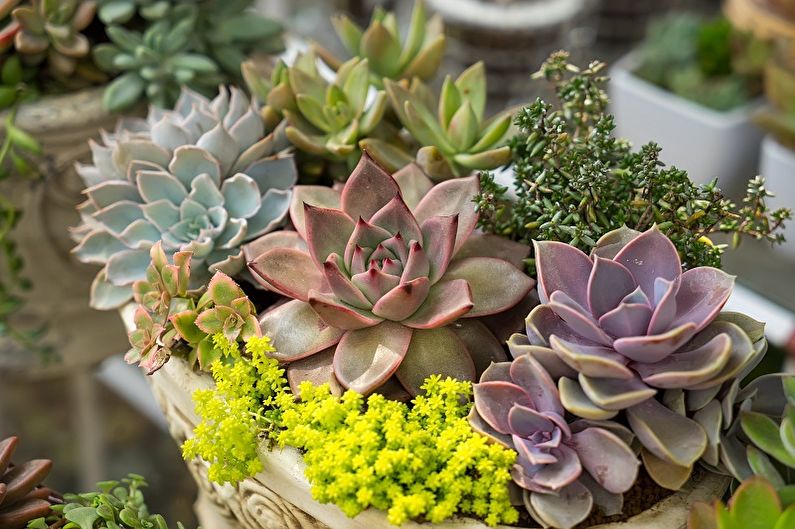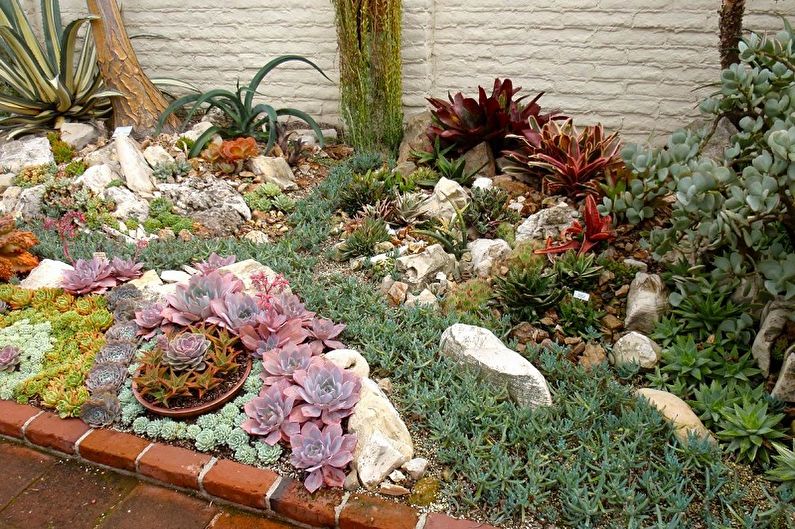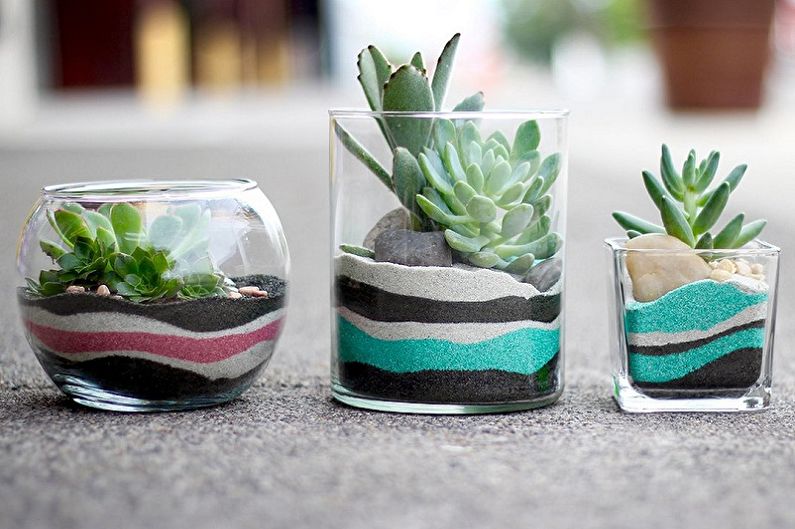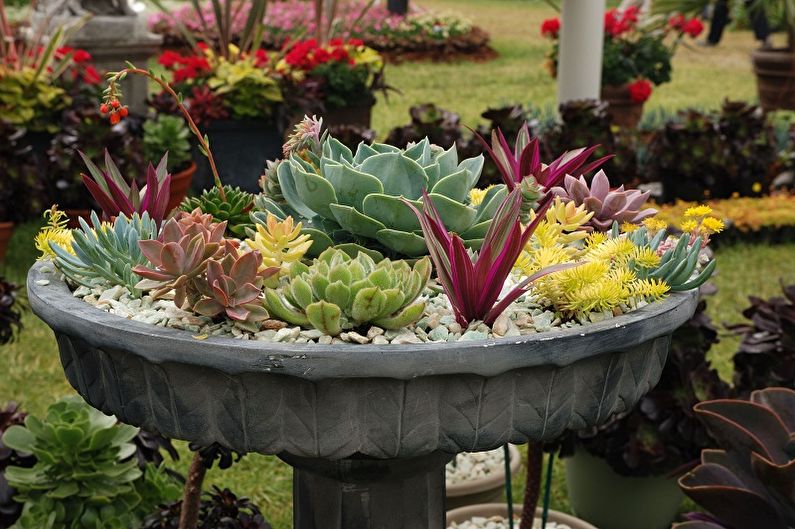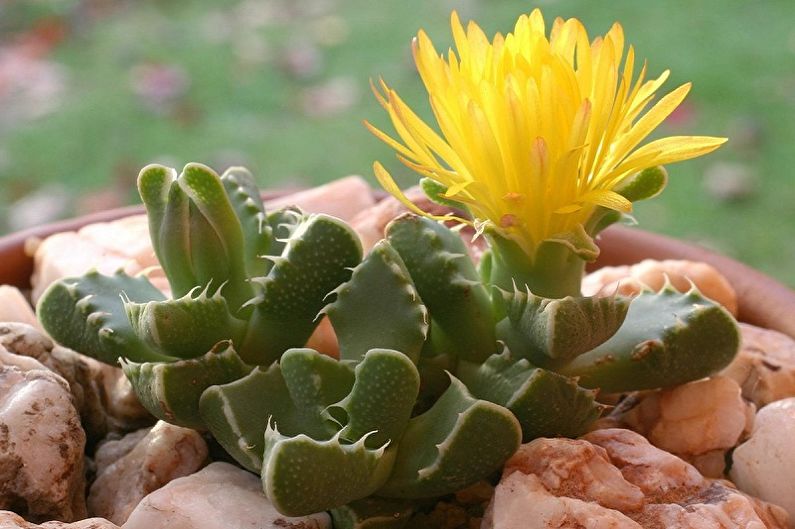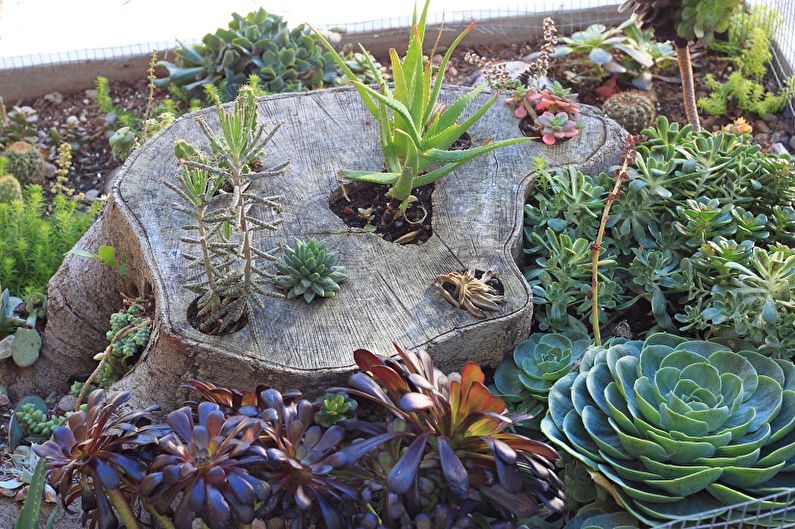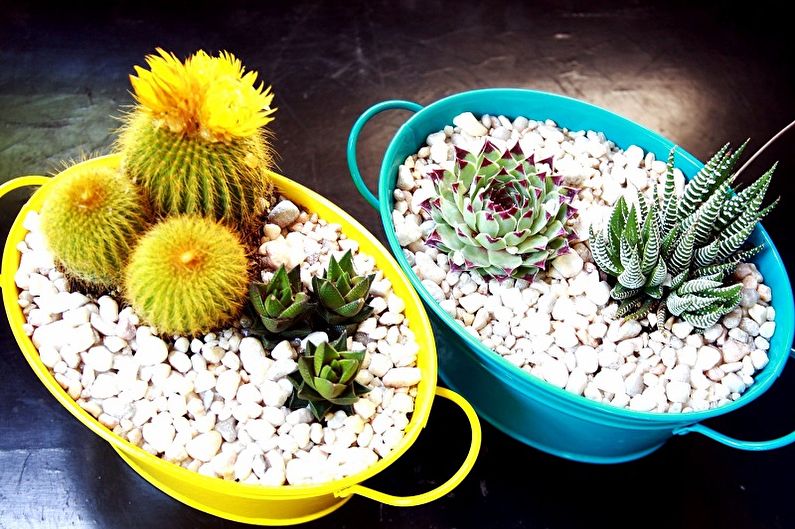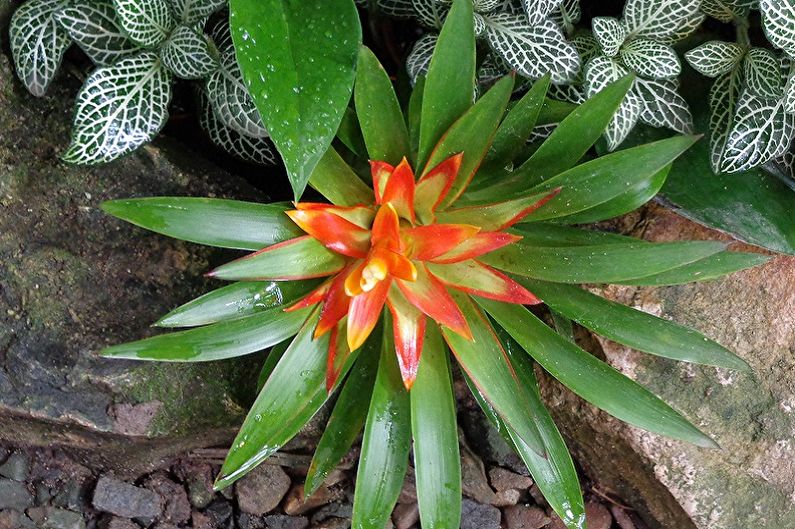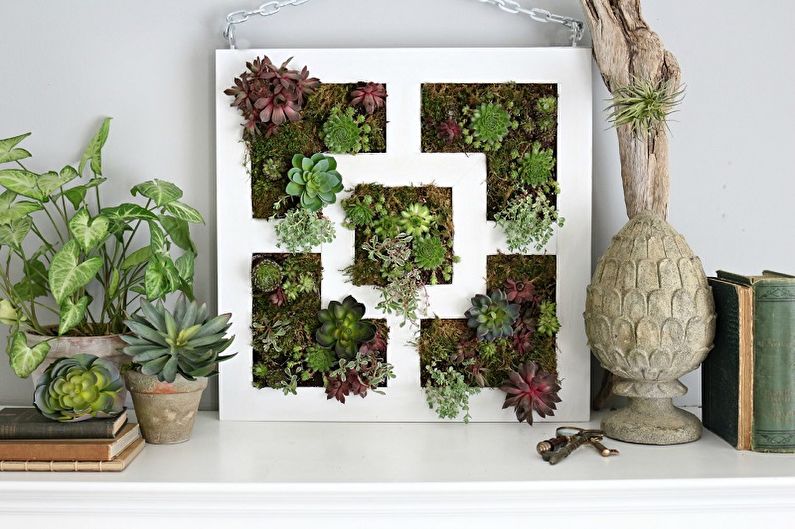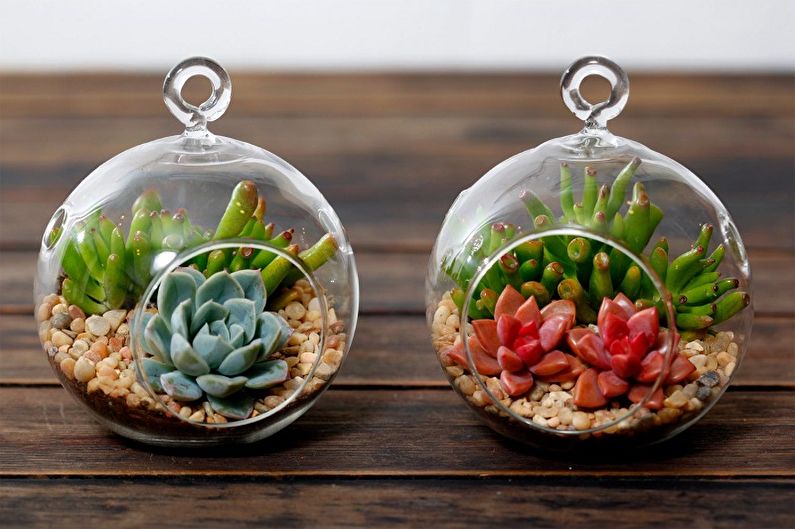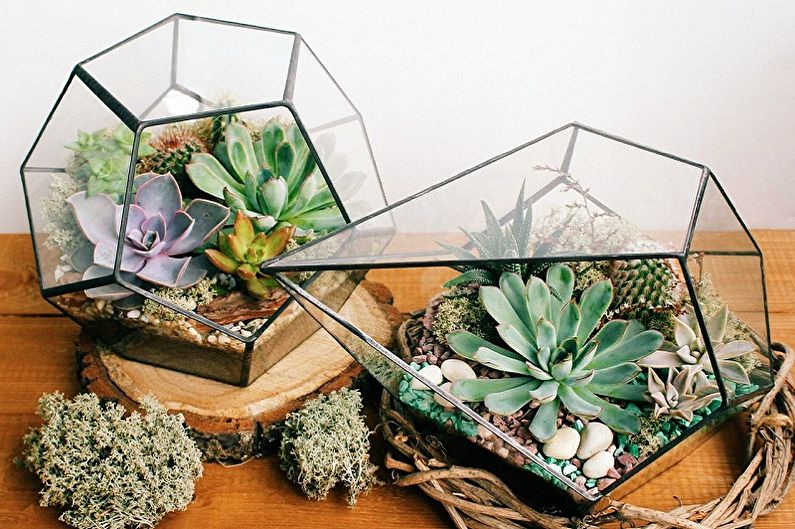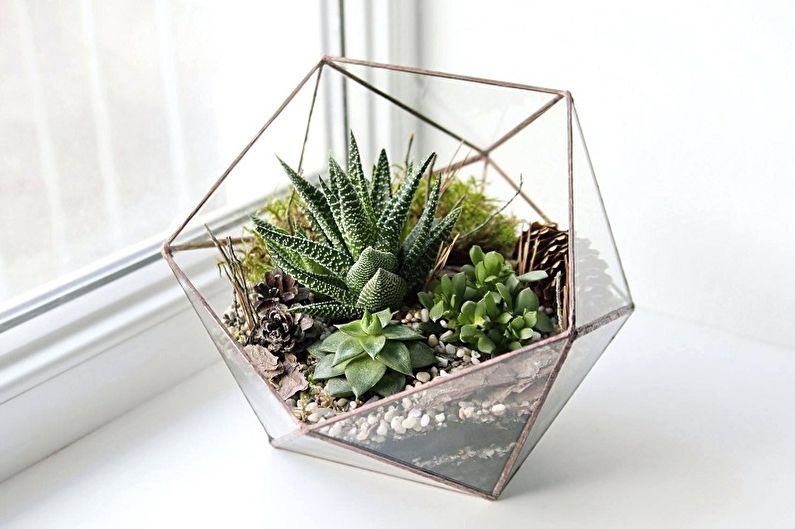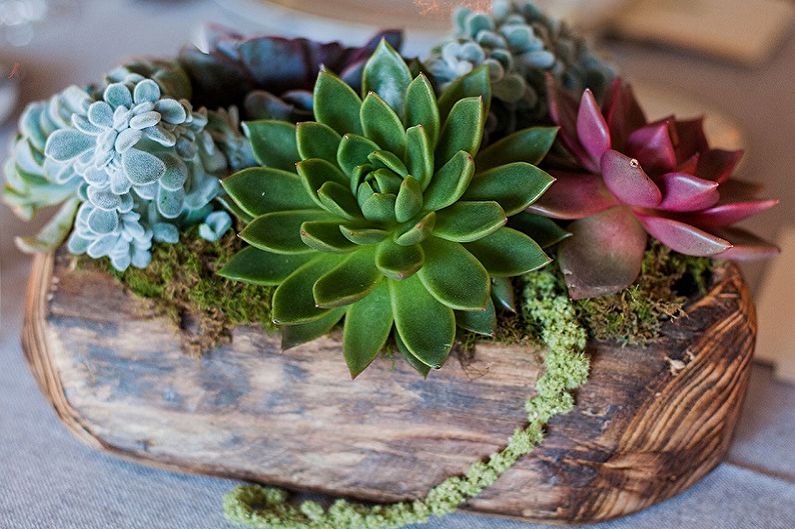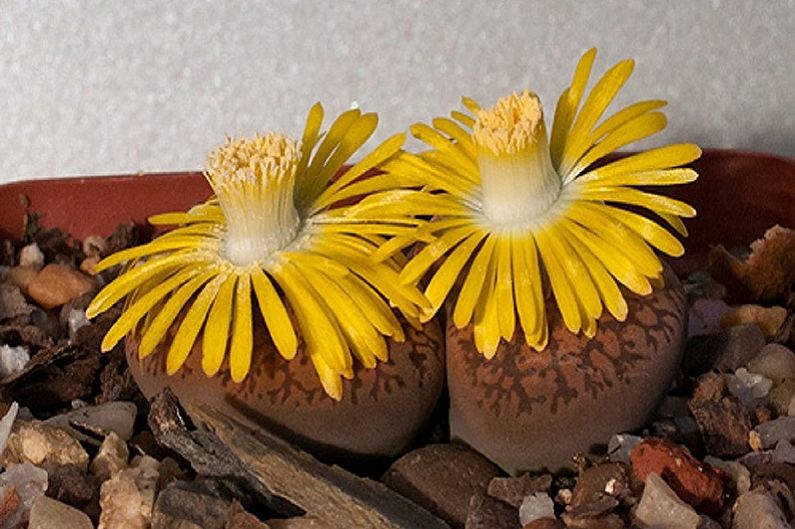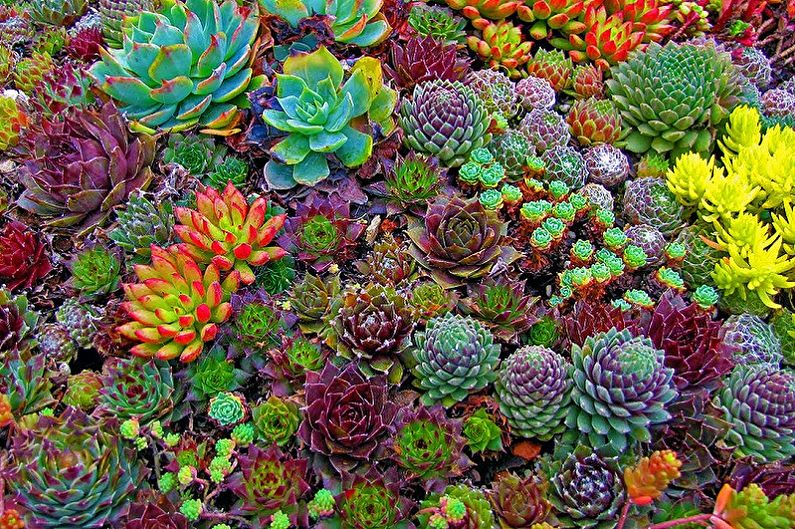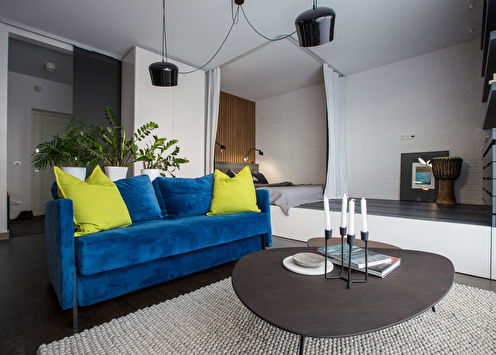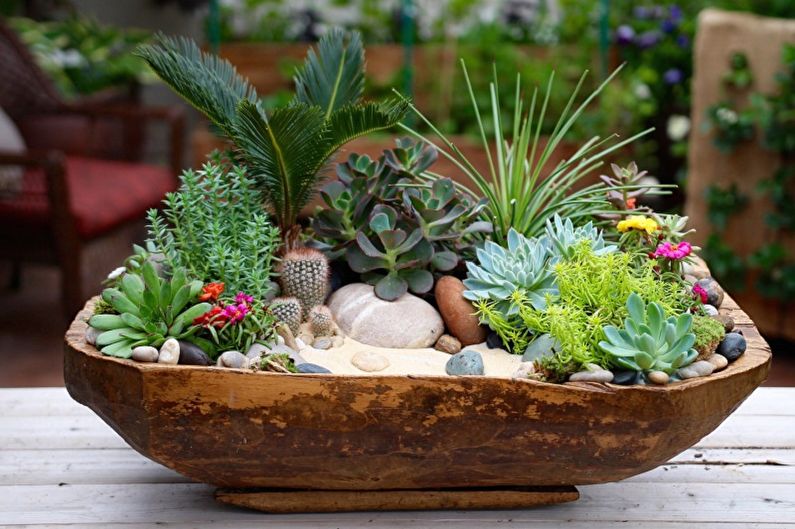
Kalanchoe, aloe, cacti, fat girl, Crassula, agave - these unpretentious plants are in almost every house and office, but few know that they all belong to the group of succulents. This category combines species characteristic of arid climate regions that accumulate moisture in modified stems and leaves. Due to this feature, succulents for a long time do without watering, while maintaining an attractive appearance. Aesthetics and fastidiousness makes them an excellent option for landscaping interiors, terraces, flowerbeds and even rocky alpine slides.
Description and types of succulents
Translated from Latin, succulentus means “juicy” - this is how the appearance of representatives of the semi-desert flora can be described. In the summer rainy season, they intensively collect water, which is why they tolerate arid subequatorial winters. Several families are classified as succulents - this includes cactus, crassulaceae, agave, cinnamon, lily, euphorbiaceae, aizoon plants. Their exotic shape and bright flowers in any environment look unusually attractive, and the ability to do without watering for a long time saves time and effort in caring for these compact green spaces.
In the broadest classification, succulents are divided into two categories: stem, with a thickened and often ribbed stalk (cacti, euphorbia) and leafy, in which moisture accumulates in fleshy leaves (Crassula, aloe, young and others). The biological characteristics of all these plants allow them to absorb water from any possible sources: long roots draw it from the deep layers of the soil, ground processes collect dew, the fluff on the surface is designed to condense moisture droplets from the air, and rain flows down smooth smooth leaves to the outlet . All this means that guests from the arid climate still need life-giving watering and spraying, but this must be done very moderately and carefully.
Indoor species are cultivated for which a decrease in sunlight and temperature during dormancy is not critical. The most popular indoor succulents are all kinds of cacti, as well as numerous names of Tolstyankovs, such as:
Eonium. Rounded and slightly pointed to the tips of the leaves of Eonium in appearance resemble multilayer flowers of dahlia or roses. Moreover, they have completely unique colors - the green gradient along the serrated edges can be edged with pink or red, dark crimson, black, lemon, cream-green species are also found. The stalk of room eonium is very short, and the leaves are pressed tightly against each other, growing staggered from the center to the edges.

Graptopetalum. The attractiveness of this plant lies mainly in its unusual flowering. Around May-July, twigs with beautiful five-petalled pink “stars” appear from the squat rosette of fleshy leaves. Bright yellow stamens on long legs sparkle in the center of the opened buds, which give the blossoming flowers a special festive charm. This extravaganza lasts 2-3 weeks, and then the succulent returns to the standard appearance for the fat women.
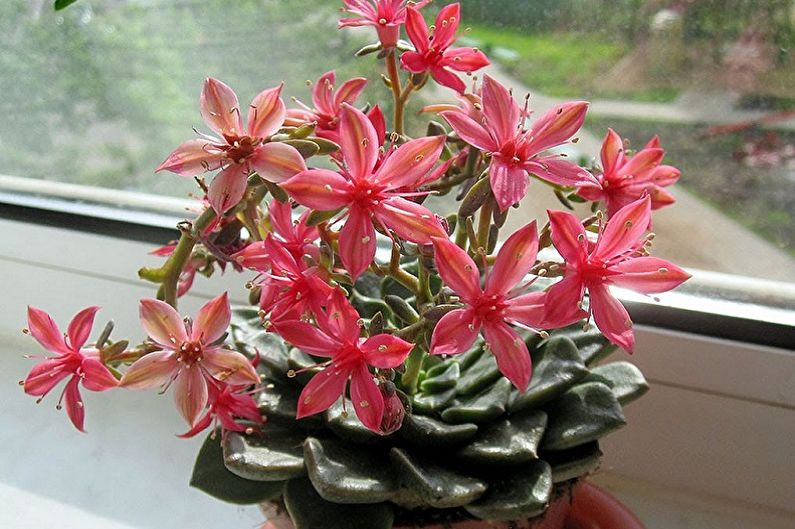
Pachyphytum. The Greek name Pachyphytum means "plateau", which can really be considered the main sign of this succulent. Its dense leaves in the form of elongated and slightly flattened grapes are covered with a bluish waxy coating, which prevents the evaporation of moisture.The plant has the form of numerous pineal processes that are interconnected by short stiffened stems. Pachyphytum blooms plainly, releasing small pinkish shoots like slightly deformed ears.
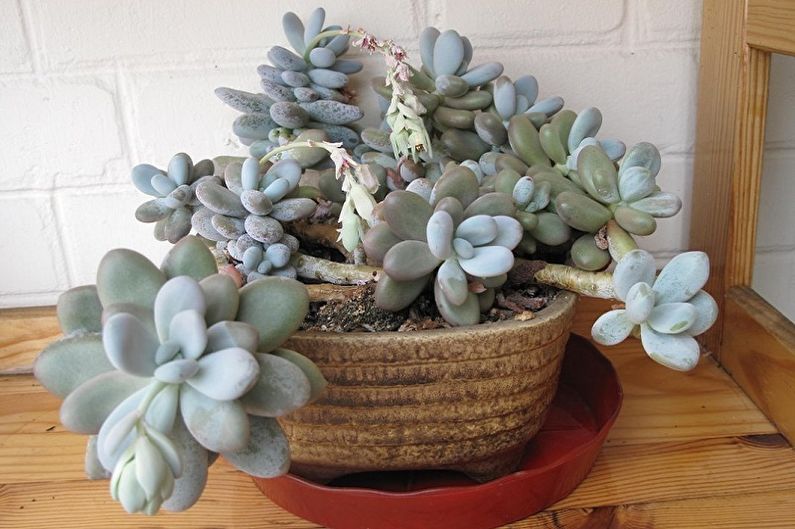
Aichrison. This succulent is also called the "tree of love." With its small dark green leaves, crown-shaped branches and a dense stem, it really resembles a miniature tree. Associations with romance are probably caused by the heart-shaped form of leaf blades. In the spring-summer period, aichrison is covered with a lush cloud of small golden flowers, which are very similar to panicles of St. John's wort. To form the crown, the tree is regularly pruned, and in the warm season it needs regular watering with small doses of water.
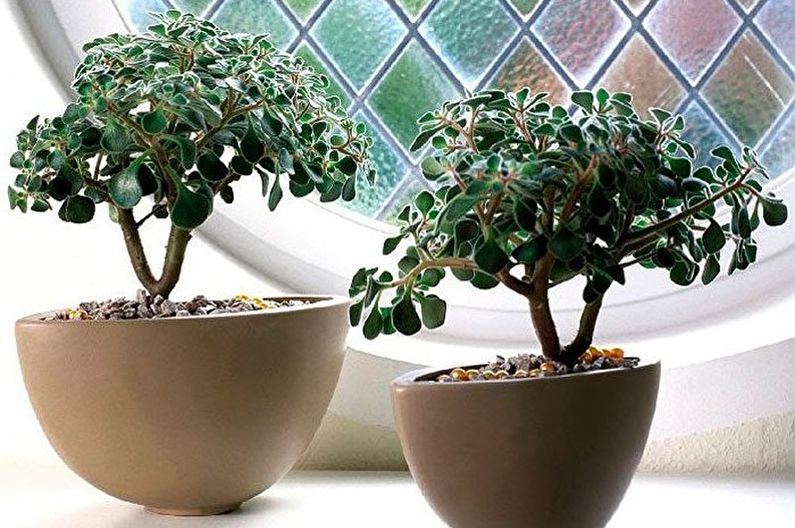
Monantes A large number of small green cones growing directly from the ground - this is monantes. During flowering, a thin reddish stem with a pale yellow “star” at the end rises from the center of each outlet. This succulent is valuable for its miniature, and in compositions it makes an interesting background for larger plants.
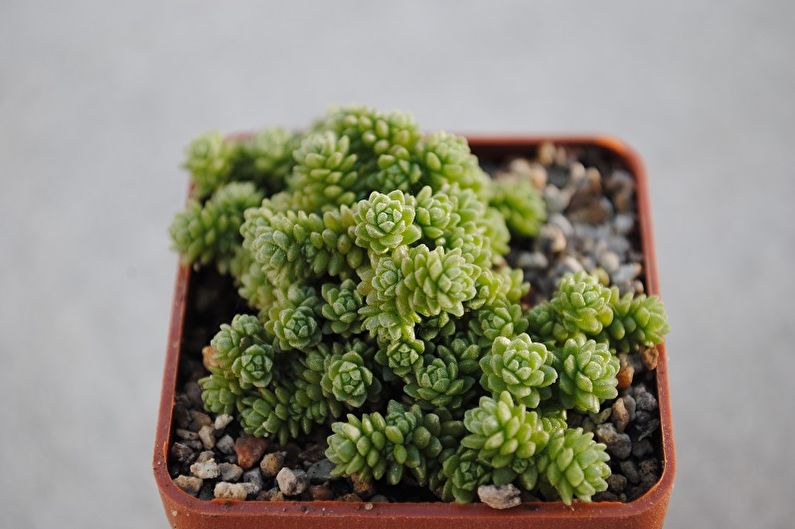
Crassula. Much more often, this plant is referred to under the names "crassula", "tree of happiness" or "money tree". Its rounded leaves with a yellowish tint look like coins, so this succulent is considered an amulet that attracts financial wealth and prosperity to the house.

Brigamy. A bright palm-shaped plant, known as the "Hawaiian palm", "palm volcano." In the autumn, yellow star-flowers appear in the green top, with which the succulent takes on an even more exotic look.
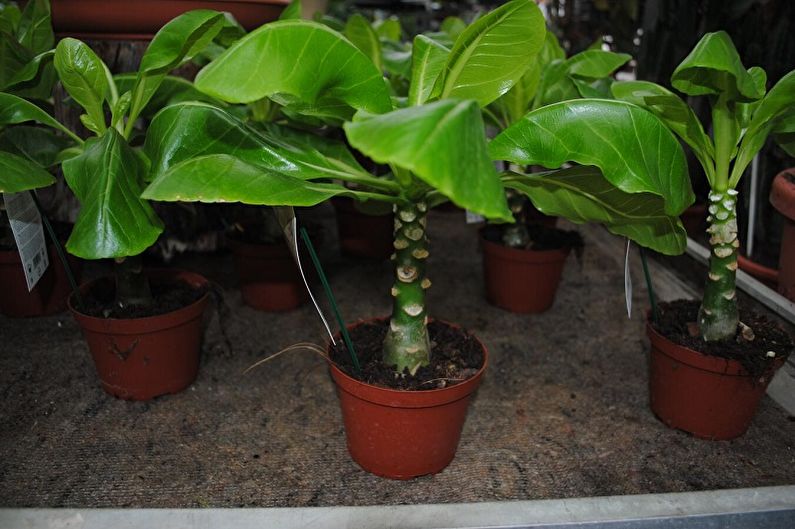
Portulacaria, or “elephant shrub” is a decorative mini-tree with a very powerful tree-shaped stem of dark brown color. In texture, it really causes associations with the legs of elephants, but countless miniature light green leaves on the background of a thick base look very contrasting.
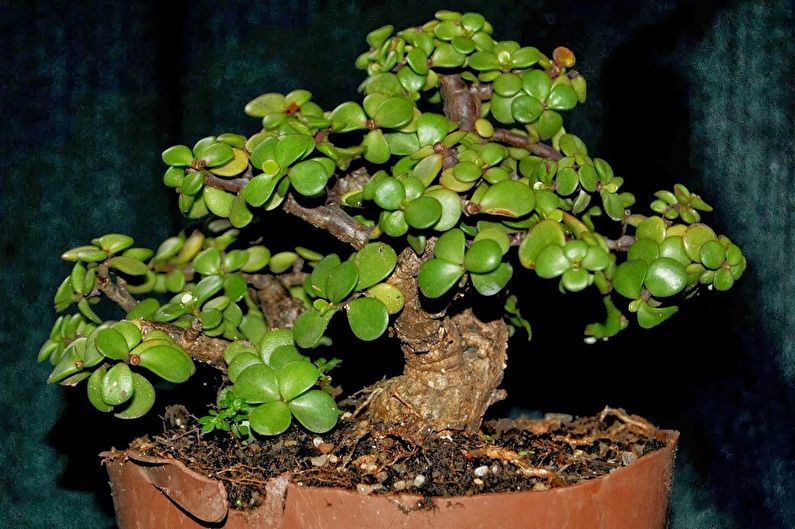
Argyroderma, which in translation sounds like “silver skin”, owes its name to its unique coloring. The cold greenish tone of the dense leaves due to the light gray wax coating seems even more mysterious. In shape, this plant repeats sea stones - the same smooth and oval-flattened, but dissected in the center. During the flowering period, the leaves open slightly, and in each there is an incredible beauty “aster” of orange, pink or bright yellow color.
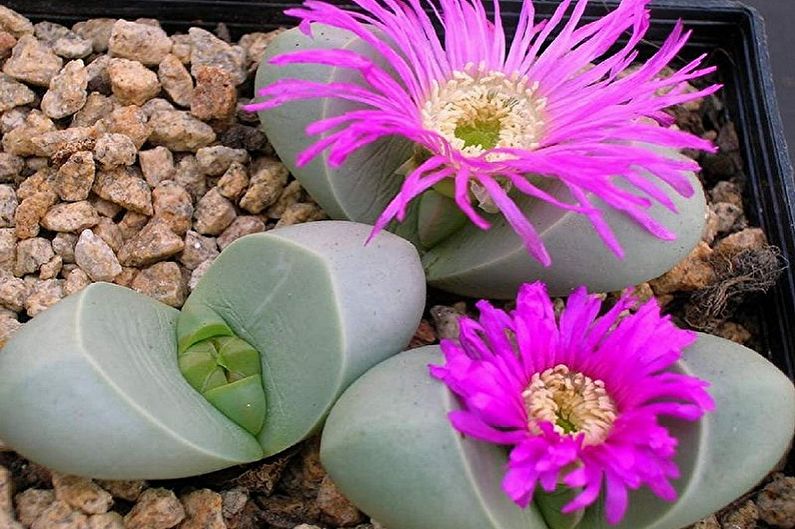
Lithops, or living stones, it will not immediately be possible to distinguish from pebbles. Gray, slightly spotty color completely disguises them in the natural environment. Succulents give out belonging to the plant kingdom only during flowering, when bright “daisies” in yellow, orange, pink or white colors bloom in the middle of rounded half-leaves.
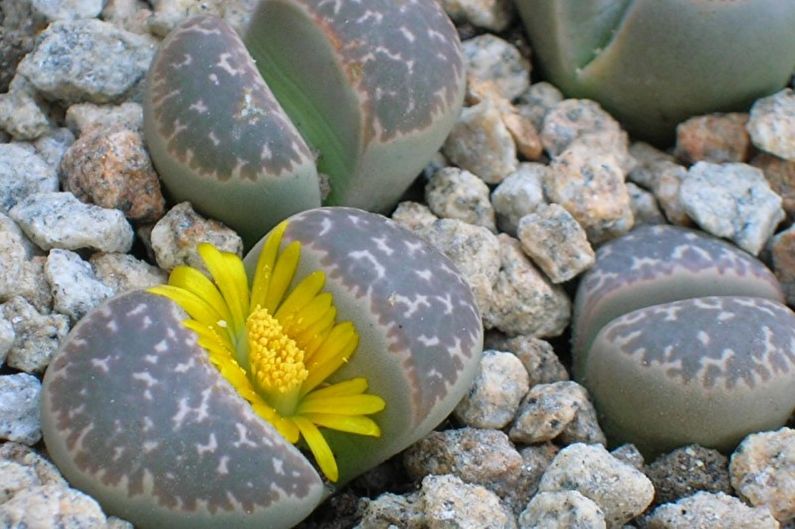
Kalanchoe, with its rich and lush asterisks, is often purchased as a gift or just to decorate the interior. This succulent is well developed in ordinary room conditions, stably tolerates both excess and lack of sunlight. Kalanchoe juice has anti-inflammatory, wound healing and regenerating properties, which is widely used in traditional medicine and cosmetology.
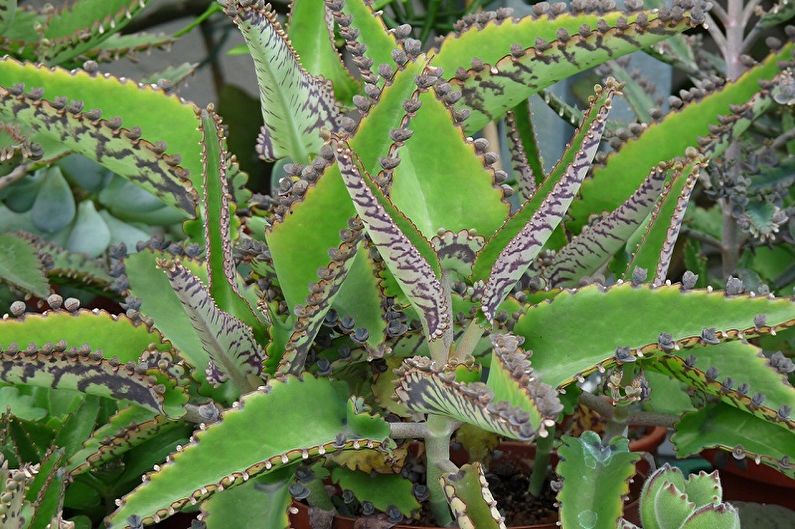
Haworthia. It has fleshy, but elongated and pointed to the ends of the leaves with serrated spikes on the edges or woody white dots and "ribs" on the entire green surface. At the same time, young plants look quite peaceful, and over time they become more and more “awesome”, prickly. Thanks to the exotic texture, haworthia can adequately decorate any floral composition.
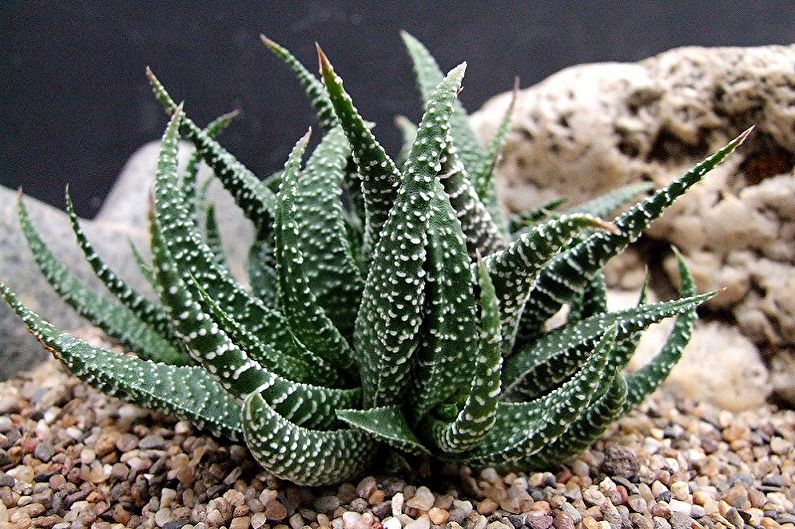
Succulent Care
Brought from an arid climate, succulents need quite severe growing conditions. The slightest excess of comfort, oddly enough, leads these Spartan plants to a loss of decorativeness or even death.
Cacti, fat women and other guests from the desert latitudes respond positively to the indifferent attitude of the owners - they can even be left in the apartment without supervision and watering, and after a few months can be found in the same condition. But succulents will please with a truly beautiful shape and flowering only when they are provided with an optimal climate close to natural.
Lighting
For all these species, the sun's rays are vital, although, for example, Tolstyannikov is recommended not direct, but slightly diffused light. Scorching heat is preferred by desert and mountain plant species - cacti, aloe, Kalanchoe, dwarf shrubs. For this reason, it is advisable to grow them on balconies and window sills on the south side of the house. In winter, succulents begin to rest, photosynthesis slows down, so short daylight hours are not a big problem, but you should not rearrange plants in a dark corner.
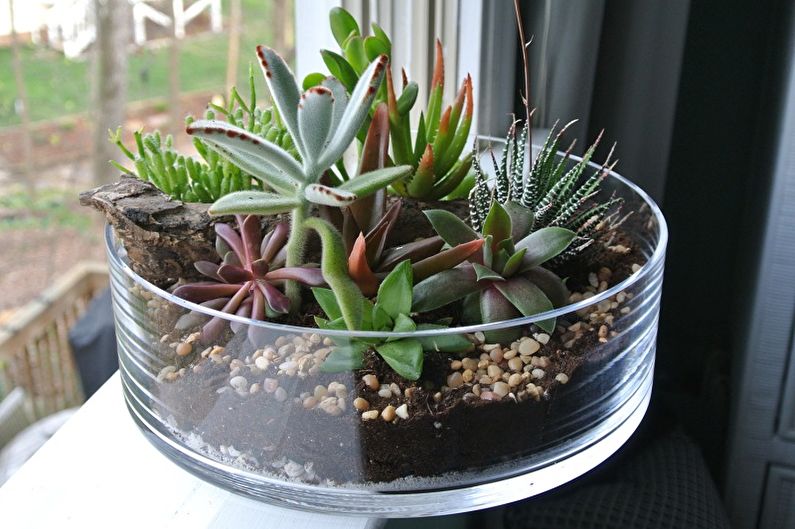
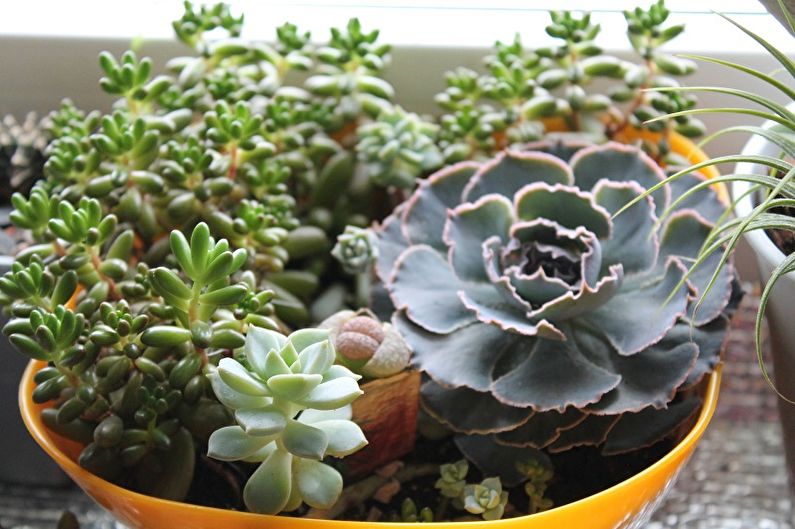
Air
Succulents need good ventilation for proper development. Loose rocky soil should provide air access to the roots. In general, plants respond well to airing the premises, and in summer they are recommended to be planted on a flower bed, or at least taken out with pots to a balcony, veranda or under a canopy. A positive effect is exerted by the natural humidity of oxygen, from which the leaves absorb the missing elements.


Watering
Excess moisture for this botanical group is more harmful than its long-term lack, so moderation and caution should be exercised with water. During active growth and flowering, that is, from late spring to early autumn, succulents need to be watered 1-3 times a week in small portions. In the off-season, the frequency should be about once a week and a half, and in winter one or two modest waterings per month are sufficient.
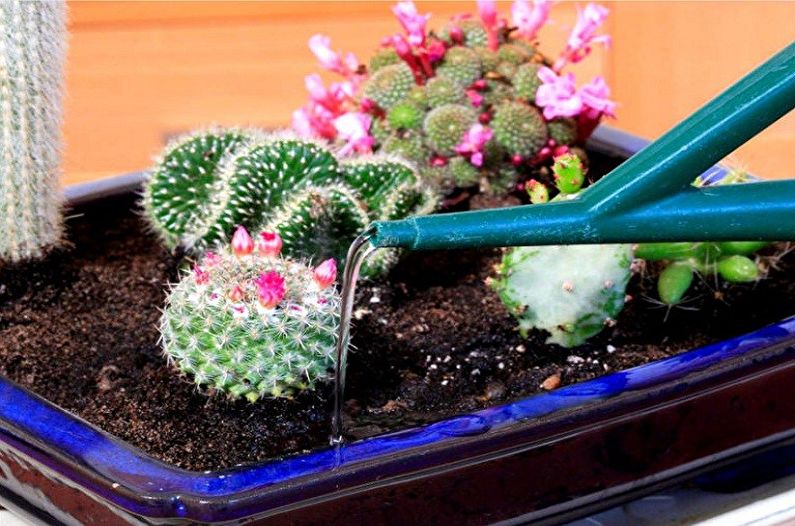
Temperature
For summer, the optimum temperature in a room with cacti and similar moisture storage devices is standard + 25 ... + 30C heat during the day and + 15 ... + 20C at night. During dormancy, most of these plants like to cool, so lowering the temperature to + 5C is allowed, although normal room conditions from + 15 ... + 20C are also suitable.
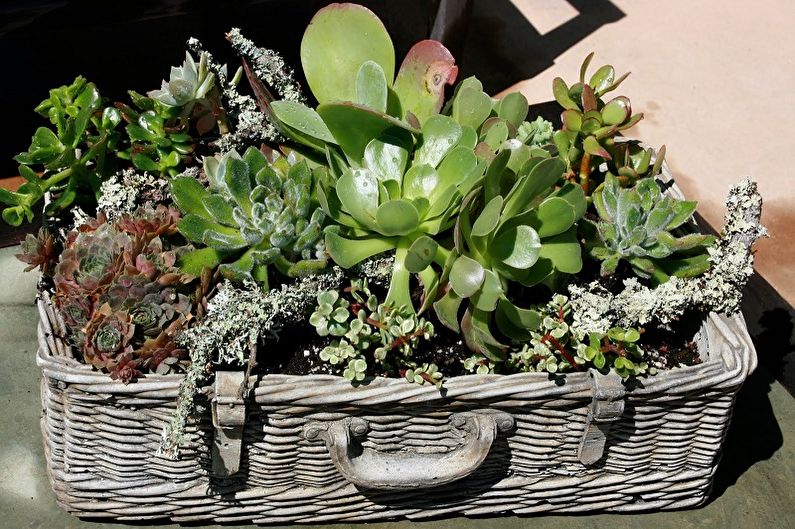

Fertilizers
Any organic matter is categorically contraindicated to succulents, but mineral fertilizers with phosphorus and potassium will come in handy. It is best to buy a ready-made preparation for cacti and water them with plants with the frequency indicated on the packaging during the growth period (spring-summer).
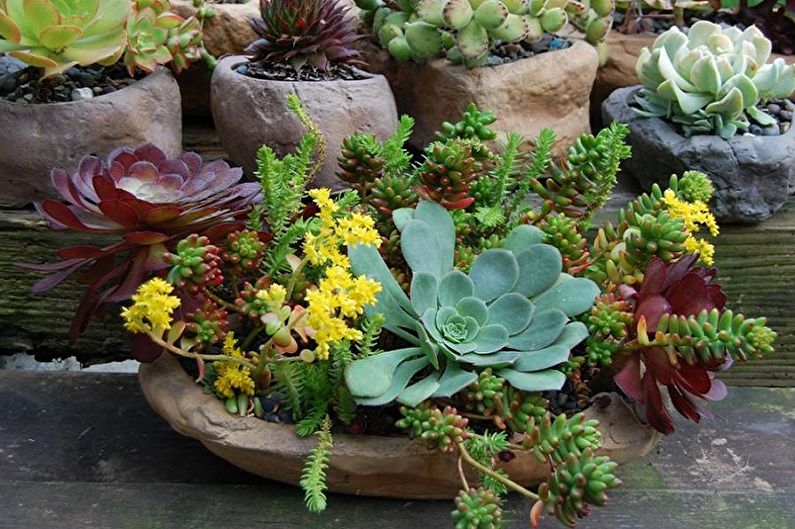
Reproduction and transplantation of succulents
There are four main methods of propagation of this group of indoor plants: from seeds, from cuttings, by rooting of parts of leaves, or the usual separation of subsidiaries.
The process of growing seeds is the longest and most laborious, so it is used only by professionals for the cultivation of new varieties. Amateur growers are limited to very simple vegetative methods. So, for example, a cut stalk or a fleshy piece of leaf is enough to dry for 1-2 days, treat the section with a growth stimulator, and then deepen by 1.5–2.5 cm in river sand, previously watered with warm water, and leave in a bright place 2-3 weeks for rooting. Parts of leaves can sometimes be simply laid on moist soil without sprinkling them - soon roots will appear at the cut site, which themselves will begin to grow.
The soil for succulents must be poor in organic matter, so peat, chernozem or humus should not be added to it. The clay-turf mixture is best suited, which can be further facilitated by coarse river sand. For additional ventilation, it is recommended to add small pebbles or broken sea shells.
As a rule, the “ingredients” necessary for plants are laid in a container in layers: pebbles or other drainage on the bottom, then the soil itself, a layer of sand and again stones. Such a mosaic looks especially impressive in transparent florariums.So that succulents do not spend all their energy on root growths, they select relatively small and close pots, replanting them only as the ground part grows every 1-3 years.
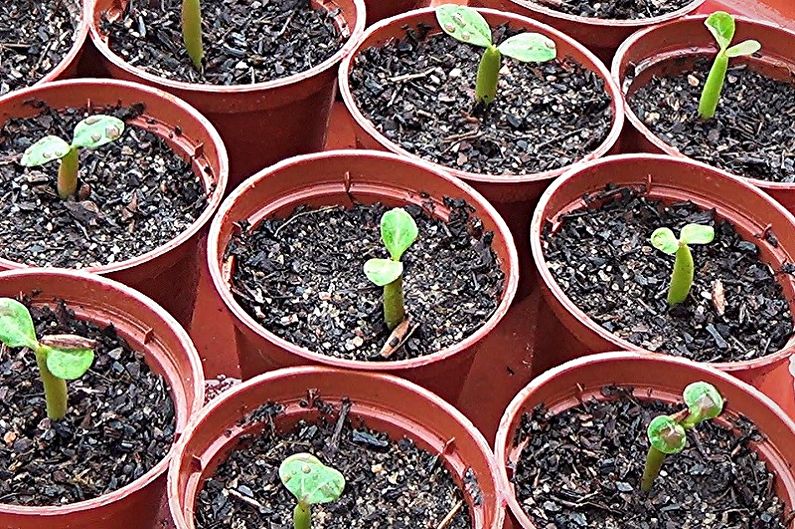

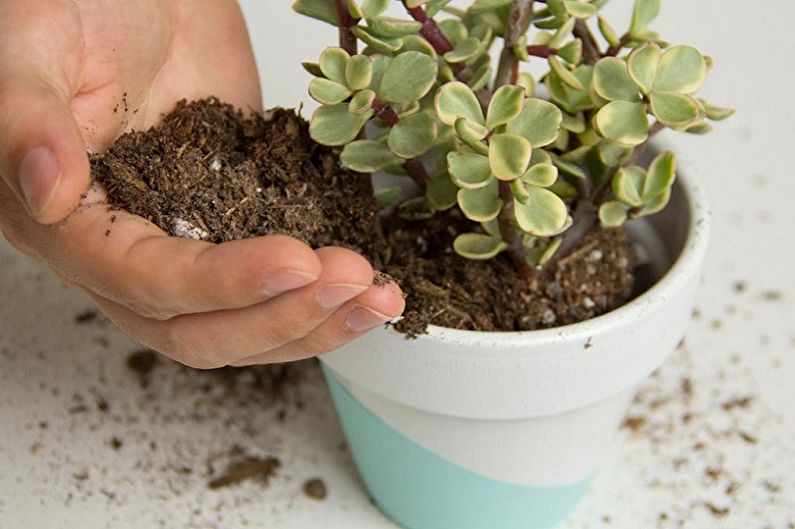
Succulents - photo
Unusual beauty and unpretentiousness of succulents give wide scope in their application. Plants are able to decorate the adjacent territory, being a worthy element of a flower bed or flower garden. With their participation, they create the most original floral arrangements, including magnificent phyto-walls. Succulents look especially elegant in home florariums, which can be done independently using curly containers. Many pictures of our photo gallery will introduce you to the varieties of these interesting and, sometimes, funny plants. Enjoy watching!
